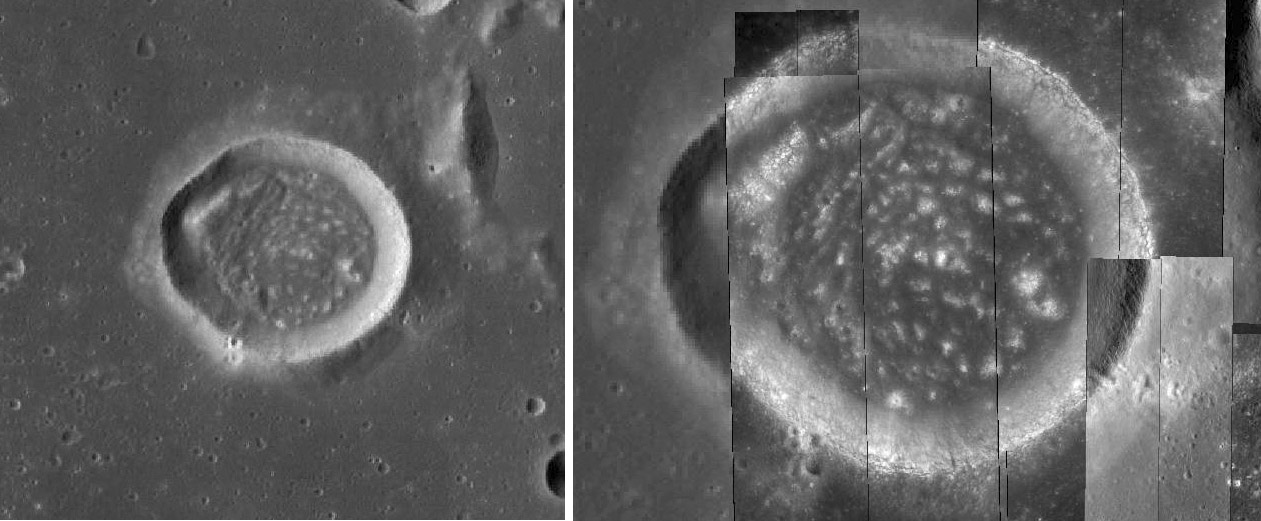August 20, 2013
Small, Equal-Size Hills
WAC and NAC images from LRO QuickMap (NASA/ASU)
Here is another, two days in a row, strange feature noticed on Lunar Reconnaissance Orbiter images. Guericke B is a 15 km wide crater with a
familiar morphology. This type of crater is shallow, typically has a flat floor and has a continuous slope inner wall. Nearby Tolansky is almost
a twin, except for the floor. The floor of Guericke B is bizarrely covered with about 60 small, roughly equal-size hills. Two or three hills could
be central peaks, and north of them the hills seem to be aligned in two rows concentric to the crater rim. The hills on the south side of the floor
are not arranged in any obvious pattern. Collapses of crater walls, such as on the west side of Guericke B, often produce floor hills, but never
so regularly sized and placed. These do not look like rubble derived from the walls, even though that could conceivably explain the curved
lines of hills on the north. It is completely unlikely that the hills are some sort of ejecta from Guericke B or anywhere else. Additionally, the
arrangement of the northern hills also makes it seem extremely unlikely that the hills are volcanic cones. Even though there is no believable
explanation the hills do exist. What could have caused them?
Chuck Wood
Related Links
21st Century Atlas chart 16.
COMMENTS?
Click on this icon File:PostIcon.jpg at the upper right to post a comment.




